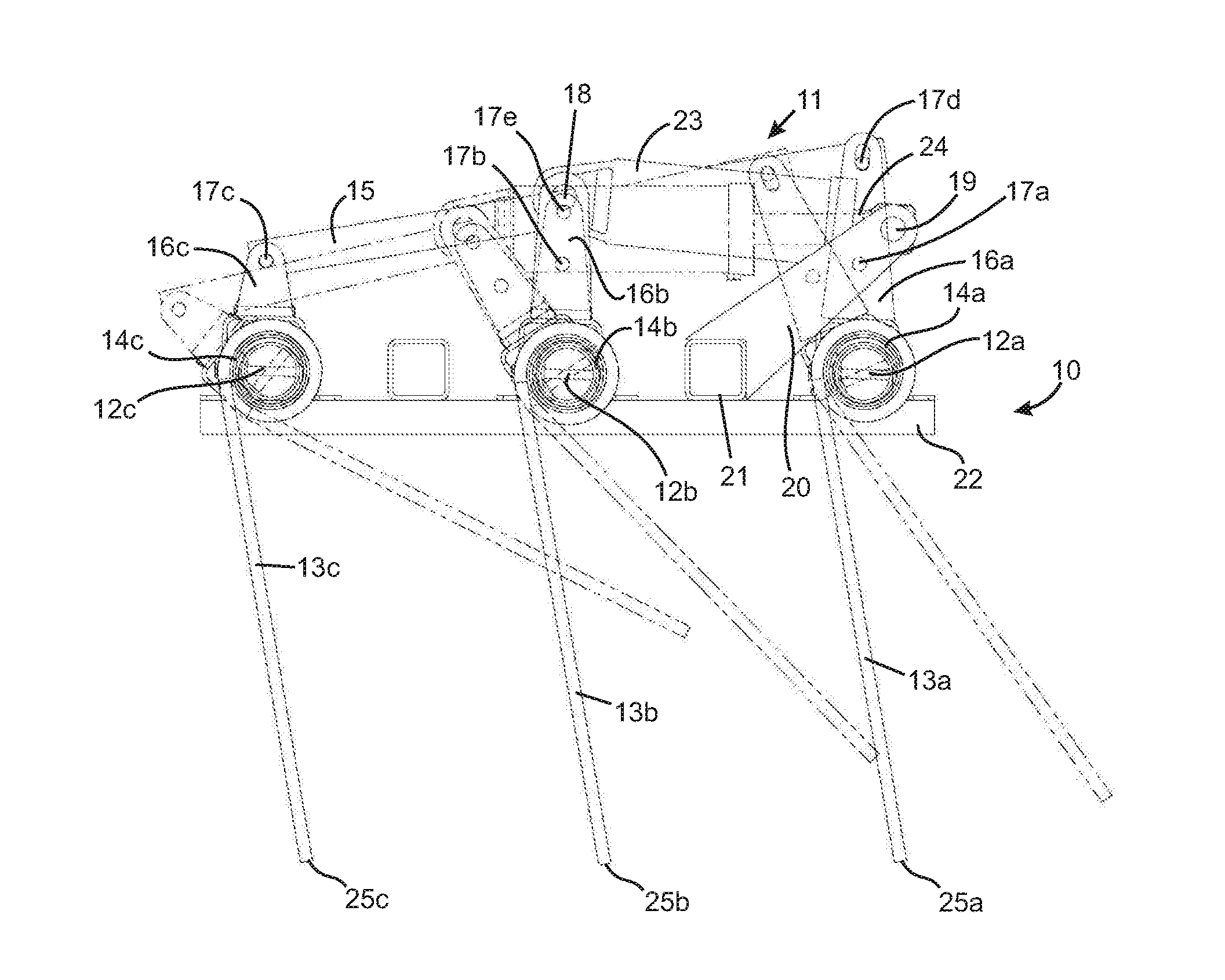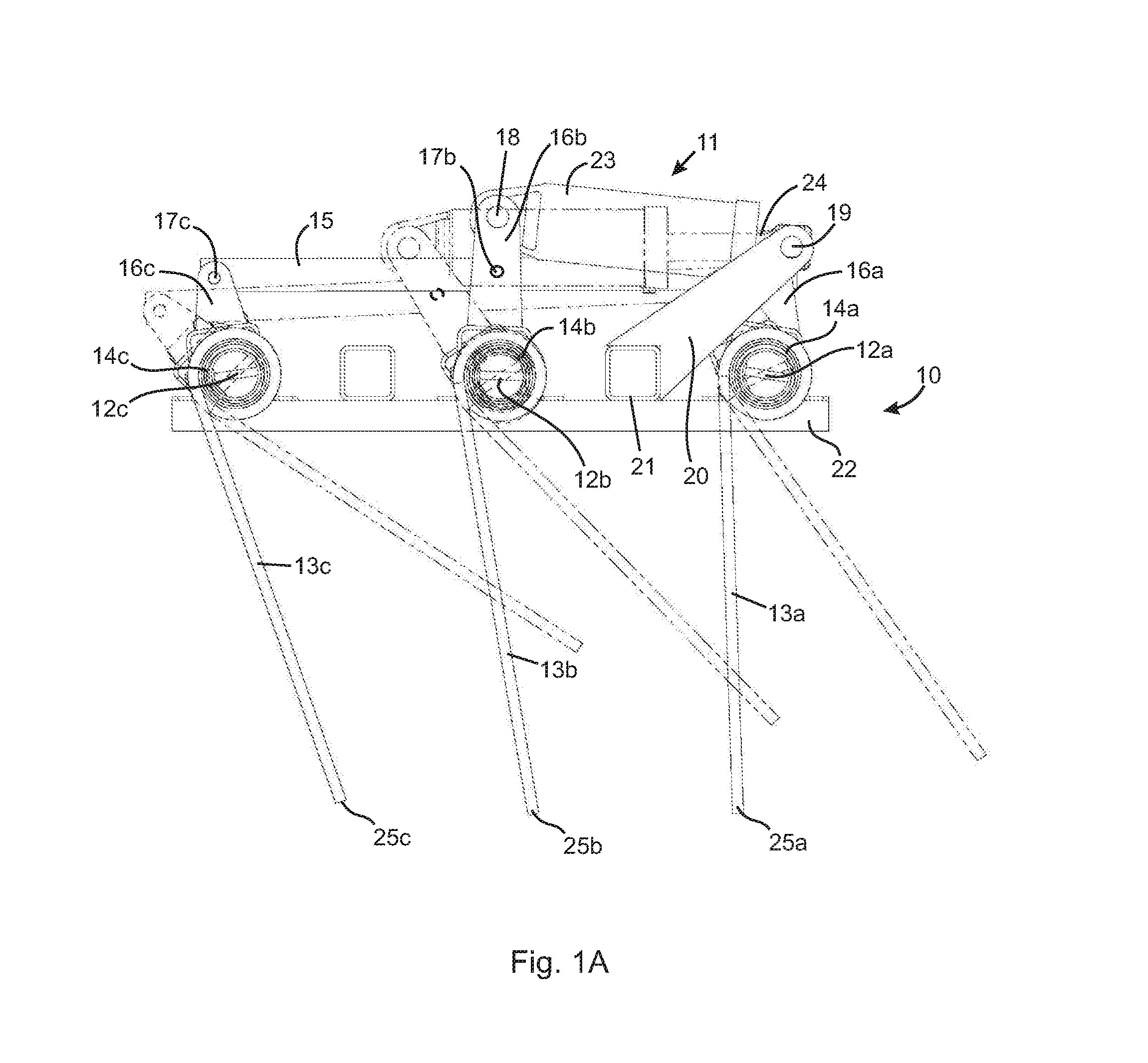Tine harrow
a technology of tine harrow and tine harrow, which is applied in the direction of agricultural machinery, agricultural tools and machines, adjusting devices, etc., can solve the problems of reducing the effectiveness of the tine harrow in changing land conditions, and reducing the likelihood of getting stuck in wet soil conditions, so as to enhance the effectiveness of the response of the tine harrow and the effect of effective respons
- Summary
- Abstract
- Description
- Claims
- Application Information
AI Technical Summary
Benefits of technology
Problems solved by technology
Method used
Image
Examples
second embodiment
[0044]FIG. 6 illustrates how relative positions of tines of a tine harrow in relation to a surface of a field may be selectively controlled. In FIG. 6, the harrow section 10 has three transverse rows 12a, 12b, 12c of harrow tines 13a, 13b, 13c rigidly mounted on respective transverse rotatable axles 14a, 14b, 14c as described in connection with FIG. 1A. Mounted concentrically on the transverse axles 14a, 14b, 14c are toothed pinions 106a, 106b, 106c, respectively, which rotate with the transverse axles 14a, 14b, 14c. A longitudinally-oriented elongated translatable toothed rack 105 is configured so that the teeth of the rack 105 mesh with the teeth of the pinions 106a, 106b, 106c. The teeth of the toothed rack 105 also mesh with teeth of a drive gear 184 mounted on a drive shaft 183 of a motor 181. Rotation of the drive shaft 183 by the motor 181 causes rotation of the drive gear 184, which causes the toothed track 105 to translate longitudinally. Longitudinal translation of the too...
third embodiment
[0045]FIG. 7 illustrates how relative positions of tines of a tine harrow in relation to a surface of a field may be selectively controlled. The embodiment depicted in FIG. 7 is similar to the one in FIG. 6 except that the toothed rack is replaced with an endless loop drive chain 185. The drive chain 185 meshes with the teeth of the pinions 106a, 106b, 106c and with the teeth of the drive gear 184. The chain 185 may be driven in either direction to lower and raise the tines 13a, 13b, 13c. Operation of the embodiment in FIG. 7 is essentially the same as the one described in connection with FIG. 6.
PUM
 Login to View More
Login to View More Abstract
Description
Claims
Application Information
 Login to View More
Login to View More - R&D
- Intellectual Property
- Life Sciences
- Materials
- Tech Scout
- Unparalleled Data Quality
- Higher Quality Content
- 60% Fewer Hallucinations
Browse by: Latest US Patents, China's latest patents, Technical Efficacy Thesaurus, Application Domain, Technology Topic, Popular Technical Reports.
© 2025 PatSnap. All rights reserved.Legal|Privacy policy|Modern Slavery Act Transparency Statement|Sitemap|About US| Contact US: help@patsnap.com



